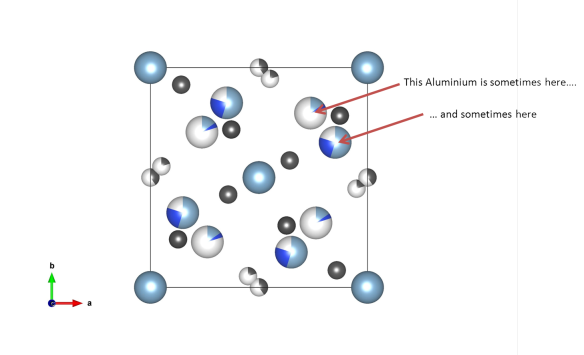Something to mull on – Mullite
What does it look like?

Image generated by the VESTA (Visualisation for Electronic and STructural analysis) software http://jp-minerals.org/vesta/en/
What is it?
This is a rare silicate mineral that was described in 1924 after being found on the Isle of Mull in Scotland – and hence named Mullite. It is also known as porcelainite, as it is found in most porcelain clays. Though it was only described in 1924, it was realised later that in the Middle Ages potters in the Hesse region of Germany would have been making crucibles out of Mullite, allowing the alchemists of the day to reach very high temperatures.
It is very unusual for a silicate, as, unlike many of these other minerals, such as the silicate perovskites, it has no elements other than aluminium to balance the charge of the structure. Hence the aluminium atoms (the light blue ones in the picture) are forced into strange configurations, and also move about (a disordered structure).
Where did the structure come from?
Because of its unusualness Mullite has been studied quite a bit, and there are a number of proposed structures in both the Crystallography Open Database and American Mineralogist data base. The one we've drawn is by Angel et al., which they found by studying Mullite with neutron diffraction.






